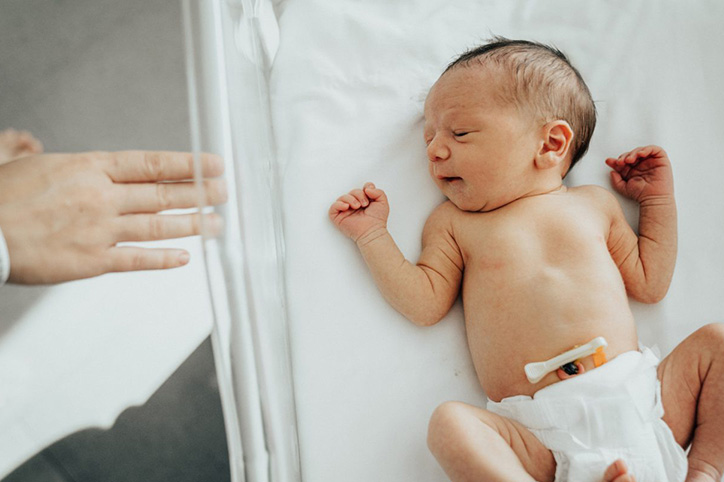New parents have a million thoughts, worries and concerns running through their minds. One many don’t anticipate, however, is caring for their newborn’s umbilical cord.
The umbilical cord is white at birth, but darkens as it dries and drops off on its own somewhere between week one and week three of your baby’s life. It’s very helpful to look for diapers that have an umbilical cutout so that you don’t have to worry about the diaper rubbing up against it (Believe makes wonderful non-toxic ones). Alternatively, you can fold your diaper down until the cord falls off, but that will be one more thing you need to remember during all of your daily diaper changes…
“Parents should try to keep the umbilical cord clean and dry to allow it to heal safely,” says Jada Shapiro, a doula, lactation consultant and the founder of boober, a marketplace for expectant parents and new families to find classes and on-demand care providers for pregnancy to postpartum. “Avoid submersion baths and use sponge baths until the cord falls off. Don’t play with or do anything particular to the umbilical cord unless your pediatrician advises otherwise.” You’ll want to wash around the cord and dry the area well (again, the area should be kept as dry as possible).
Shapiro also underlines that it’s important for parents to watch out for extreme redness, green or yellow pus and monitor your baby for fever (100.4 degrees or above). Call your pediatrician if any of those signs are present as they could signal an infection. Note that it’s possible that the umbilical cord will be half attached for a few days at which point you might notice some drops of blood – don’t try to pull the cord off! A few drops of blood are normal and the area will heal on its own.








